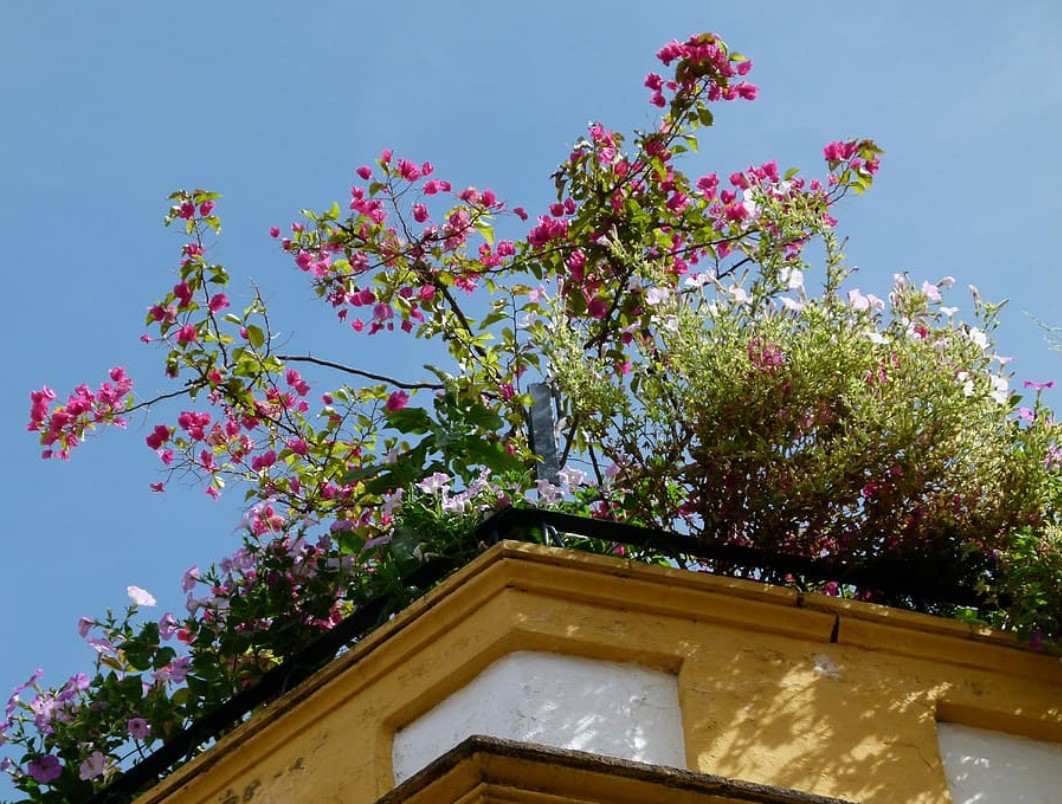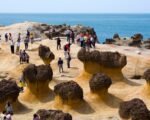The trend of mini green roofs
If you live in a building that has a commercial space on the ground floor, you may have noticed a strip of roof that extends over the sidewalk. This space is often overlooked and underutilized, but some savvy developers and designers are turning it into a mini green roof. A mini green roof is a small garden that covers part or all of a roof, usually with low-maintenance plants that can survive in shallow soil and harsh weather conditions. Unlike traditional green roofs, which are often hidden from view, mini green roofs are more visible and accessible, adding a touch of nature and beauty to the urban landscape.
Mini green roofs have been popping up in New York City since at least 2014, when DDG Partners completed its condo building at 345 West 14th Street, also known as 345meatpacking. The building features a lush mini green roof that even has trees, creating a striking contrast with the glass and steel facade. Other examples of mini green roofs can be found at 55 West 17th Street in the Flatiron District and 500 West 22nd Street in Chelsea, also known as Park House. The trend has gained more popularity since the 2020 pandemic, as people crave more green space and environmental benefits in their homes and neighborhoods.

The benefits of mini green roofs
Mini green roofs are not just aesthetically pleasing, they also offer a range of advantages for the building, the residents, and the environment. Here are some of the benefits of having a mini green roof:
- They reduce energy costs and emissions. Mini green roofs act as natural insulation, keeping the building cooler in summer and warmer in winter, and reducing the need for heating and cooling. This can save up to $5,000 per year on energy bills and lower the building’s carbon footprint.
- They improve air quality and biodiversity. Mini green roofs filter pollutants and dust from the air, improving the health and well-being of the residents and the surrounding community. They also provide habitat and food for birds, bees, butterflies, and other wildlife, enhancing the urban ecosystem.
- They manage stormwater runoff and prevent flooding. Mini green roofs absorb rainwater and reduce the amount of runoff that goes into the sewer system, preventing overflow and contamination. This can save money for the city and the building, as well as protect the water quality and the infrastructure.
- They increase property value and curb appeal. Mini green roofs add charm and character to the building, making it more attractive and desirable for potential buyers and renters. They also create a sense of privacy and tranquility for the residents, especially those who live on the second floor. Mini green roofs can increase the property value by up to 15% and the rental income by up to 25%.
How to create your own mini green roof
If you are interested in creating a mini green roof for your building, you will need to do some research and planning before you start. Here are some steps to follow:
- Check the suitability of your roof. Not all roofs are suitable for a mini green roof, as they need to be able to support the extra weight and water of the plants and soil. You will need to consult a structural engineer to assess the load-bearing capacity and the drainage system of your roof. You will also need to check the local codes and regulations, and get permission from your landlord or co-op board if you are renting or sharing the building.
- Choose the type and design of your mini green roof. There are two main types of mini green roofs: extensive and intensive. Extensive roofs have a thin layer of soil (less than 6 inches) and low-growing plants that require little maintenance. Intensive roofs have a thicker layer of soil (more than 6 inches) and a wider variety of plants that need more care. Extensive roofs are easier and cheaper to install and maintain, but intensive roofs offer more diversity and flexibility. You will need to decide which type suits your budget, preference, and roof condition. You will also need to design the layout, the irrigation system, and the aesthetic of your mini green roof.
- Select the plants and materials for your mini green roof. The plants and materials you choose for your mini green roof will depend on the type, design, and location of your roof. You will need to consider the climate, the sun exposure, the wind, and the water availability of your roof, and select plants that can thrive in those conditions. Some of the best plants for mini green roofs are succulents, grasses, herbs, flowers, and shrubs. You will also need to choose the materials for the waterproof membrane, the drainage layer, the filter fabric, the growing medium, and the edging of your mini green roof.
- Install and maintain your mini green roof. Installing a mini green roof can be a DIY project or a professional service, depending on the size, complexity, and cost of your roof. You will need to follow the instructions and safety precautions for the installation, and make sure everything is secure and functional. You will also need to maintain your mini green roof regularly, by watering, weeding, pruning, fertilizing, and inspecting your plants and materials. You may need to hire a landscaper or a gardener to help you with the maintenance, especially if you have an intensive roof.








